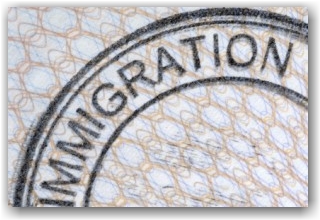Senators Pitch Immigration Compromise
January 28th, 2013A group of 8 bipartisan senators have reached a deal on the outline of a comprehensive immigration overhaul, a development that is long overdue and will assist in framing the forthcoming immigration debate in Congress. Senator Schumer has stated that it is their plan that this can be turned into legislation by March and put into law by mid-late summer 2013.
According to a five-page document released today, the proposal provides a broad-based approach, agreed to in principle by eight senators, that seeks to overhaul the immigration system and create a pathway to citizenship for the nation’s roughly 11 million illegal immigrants.
Although all that we have focused on for years now is nothing else but border and enforcement issues and employment verification, the proposal takes enforcement to the next level by perfecting an entry/exit tracking system, and greater usage of E-Verify or a new and improved E-Verify system that is referred to as “fast and reliable.”
Legislators will create a commission comprised of border governors, attorneys general and community leaders living along the southwest border to monitor the progress of securing the border and to make a recommendation regarding when the bill’s security measures outlined in the legislation are completed.
While security measures are put in place, those who came and remained in the USA without permission, will be required to register with the government. This will include background checks, paying a fine and back taxes to earn probationary legal status to continue to live and work legally in the USA.
Once enforcement measures have been completed, those in probationary legal status will be required to go to the back of the line to wait their turn, pass an additional background check, pay taxes, learn English and civics and demonstrate a history of work in the US and current employment, among other requirements, to earn the opportunity to apply for lawful permanent residency (green-card) status. Those who successfully complete these requirements can eventually earn a green-card (legal permanent residence).
Special provisions will be accorded to the Dreamers (minor children who did not knowingly choose to violate any immigration laws) who will have different requirements that will include a pathway to citizenship.. Individuals who have been working illegally in the agricultural industry performing difficult work for low wages to ensure the safety of the food supply of the US will also be provided special requirements and will have a pathway to citizenship.
Those who graduate from an American University with a Ph.D or Master’s Degree in science, technology, engineering or math (STEM), will be awarded permanent residency (green-card status) to keep the best and brightest talent in the USA.
There are also provisions for a guest worker program referred to as “lower-skilled workers” in the proposal that will meet the needs of employers, the agricultural industry, including dairy, to find agricultural workers and lower skilled immigrants when the economy is creating jobs and fewer when the economy is not creating jobs. If this is the H-2B program, we sincerely hope that it gets an overhaul – it’s entirely too complicated, takes too long and completely discourages employers by overburdening them with excessive details.
Resources
Please see the senator’s attached Transcript. It’s certainly a an introduction to a long-awaited immigration conversation that is achievable – but difficult. A link to a transcript from the President’s speech in NV; and the President’s Immigration Fact Sheet.
What are the differences between the Senate and Obama Plan?









